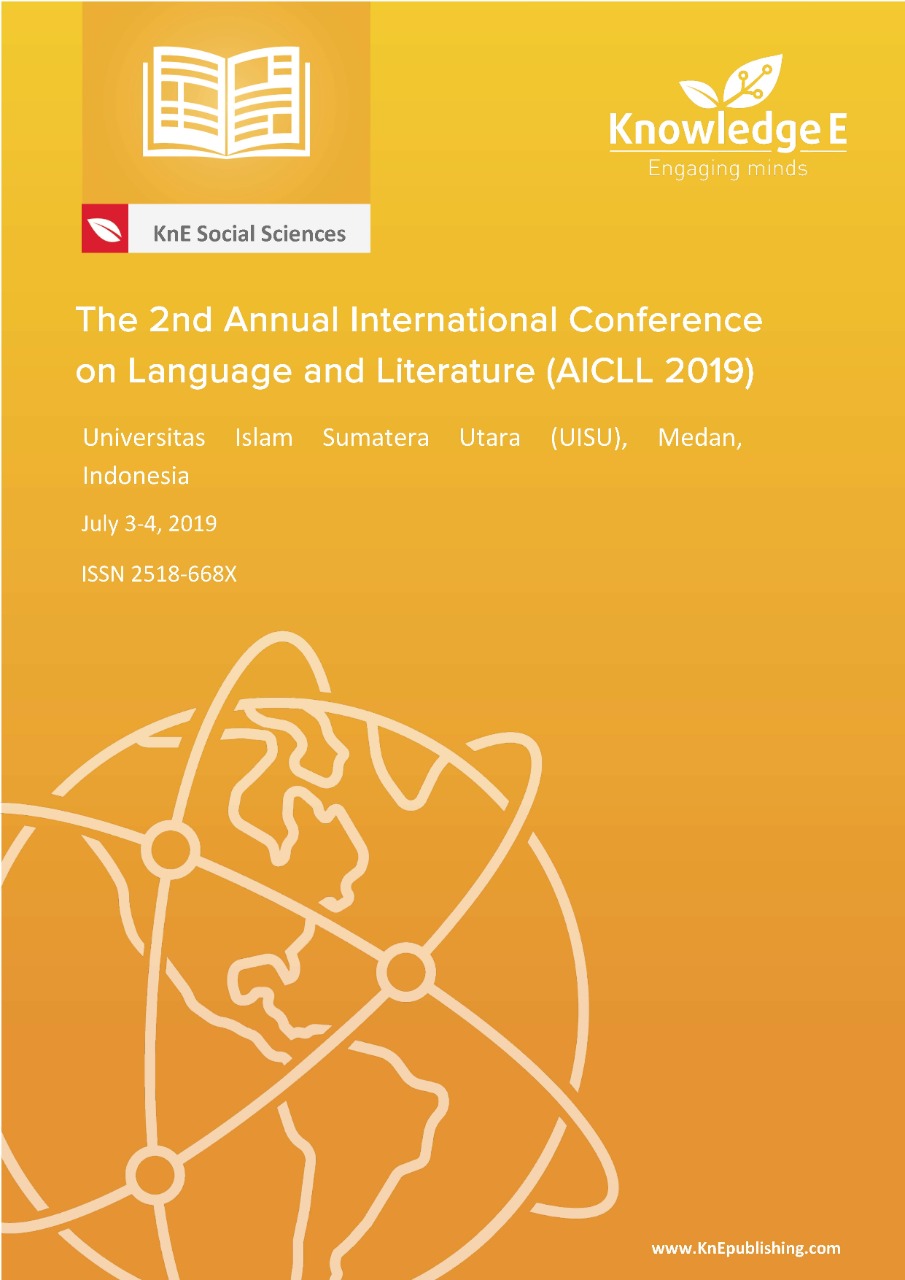Arabic Learners’ Corpora in Pesantrens for Developing Arabic Language Researches in Indonesia
DOI:
https://doi.org/10.18502/kss.v3i19.4922Abstract
Arabic corpora in the Middle Eastern countries have showed a considerable increase in availability and quantity. Unfortunately, Arabic corpora outside Arabian peninsula have still been deemed something new. Existence of a rich variety of linguistic products of Arabic language in Indonesia has the potential for the birth of, among others, Arabic learners’ corpora. The corpora will provide concrete evidence of abundance and continuity of the Arabic learners’ corpora and will lay a sound foundation for future Arabic language research and teaching. This study aims at identifying existence of Arabic learning and teaching products as useful raw materials for creating Arabic corpora in Indonesia. Methods employed in this study are conducting surveys to three pesantrens (modern Islamic boarding schools) located in Jakarta, Central Java, and East Java, distributing questionnaires, and carrying out interviews. As for interviews and questionnaires, they are carried out in order to mine substantial data out of the teachers as respondents chosen at random. The study concludes that activities that produce the Arabic learning and teaching products can be categorised into three categories; formal activities in the form of class instructions, non-formal and informal activities in the form of trainings of Arabic mastery. The products of Arabic learning activities vary accordingly, such as the teachers’ works, the students’ works, and popular works. The Arabic linguistic products are commonly identified as hand-written texts, which still must be processed digitally in order to be corpora materials, due to lackness of Arabic linguistic products that had been digitalized.
Keywords: Arabic learners’ corpora, Arabic corpora in Indonesia, Arabic research and teaching, Arabic language in pesantren
References
Al-Sulaiti, L., Abbas, N., Brierley, C., Atwell, E., & Alghamdi, A. (2016). Compilation of An Arabic Children’s Corpus. In 10th Language Resources and Evaluation Conference. Retrieved from http://eprints.whiterose.ac.uk/100839/1/ ArabicChildrensCorpus180915.pdf, April 17
Alfaifi, A. (2015). Arabic Learner Corpus. Retrieved from https://www. arabiclearnercorpus.com/, December 8
Alfaifi, A., & Atwell, E. (2013a). Arabic Learner Corpus v1: A New Resource for Arabic Language Research. Second Workshop on Arabic Corpus Linguistics. https://doi. org/10.1039/c3ib40166a, April 17
Alfaifi, A., & Atwell, E. (2013b). Potential Uses of the Arabic Learner Corpus. Retrieved. from http://corpus.leeds.ac.uk/teaching/l3t/l3t2013_submission_7.pdf, April 17
Alfaifi, A., Atwell, E., & Ibraheem, H. (2014). Arabic Learner Corpus (ALC) v2: A New Written and Spoken Corpus of Arabic Learners. In Proceeding of Learner Corpus Studies in Asia and the World (LCSAW) 2014, Kobe University, Japan. (pp. 77–89). Retrieved from https://catalog.ldc.upenn.edu/docs/LDC2015S10/ ALFAIFI_LCSAW2014.pdf, April 16
Baharuddin, I. (2014). Pesantren dan Bahasa Arab. Thariqah Ilmiah: Jurnal IlmuIlmu. Kependidikan Dan Bahasa Arab, 01(01), 16–30. Retrieved from http://jurnal.iainpadangsidimpuan.ac.id/index.php/TI/article/view/253/234, April 4
Engine, S. (2018). Types of Text Corpora. Retrieved from https://www.sketchengine. eu/user-guide/user-manual/corpora/corpus-types/, October 31
Hassan, H., & Galib, M. F. M. (2010). Arabic Concordancer ʏLu¤ا́ ȝا Ѵѳ . Retrieved from http://arabicconcordancer.com/#, October 31
Hizbullah, N., & Rachman, F. (2017). Beberapa Model dan Karakteristik Korpus Bahasa Arab sebagai Acuan Penyusunan Korpus Bahasa Arab di Indonesia. In L Ѭ ɹÙ© ث×ɲ Átת ѳ Ɂѳ " (øɁѳ ɶ ، øأد ، øªø¥u) ѳ Ѵ Ѭ ƿL¤ا Űu¤ا Ѵ ѫ Nj Áø Lu¤ا Áy¥§ا ت 1/4ѳ Ѭ دوȹ واTب "اɲ. Ѵ . Yogyakarta: LP3M Press.
Maulana, M. F. (2018). Islamization Versus Deislamization of Language a Case of Indonesian Vocabularies. In Purwarno, M. Manugeren, A. Suhendi, P. Siwi, & S. Ekalestari (Eds.), The 1st Annual International Conference on Language and Literature (AICLL) (pp. 400–408). Medan: KnE Social Sciences and Humanities. https://doi.org/10.18502/kss.v3i4.1957, April 16
Nesselhauf, N. (2011). Corpus Linguistics: A Practical Introduction. Retrieved from http://www.as.uni-heidelberg.de/personen/Nesselhauf/files/ Corpus Linguistics. Practical Introduction.pdf, April 5
Nurkholis. (2018). Metode Pembelajaran Bahasa Arab di Pondok Pesantren Tradisional. An-Nabighoh: Jurnal Pendidikan Dan Pembelajaran Bahasa Arab, 19(2), 249–267. https://doi.org/http://dx.doi.org/10.32332/an-nabighoh.v19i2.1002, April 16
Zaghouani, W. (2014). Critical Survey of the Freely Available Arabic Corpora. Retrieved from https://arxiv.org/ftp/arxiv/papers/1702/1702.07835.pdf, April 15

